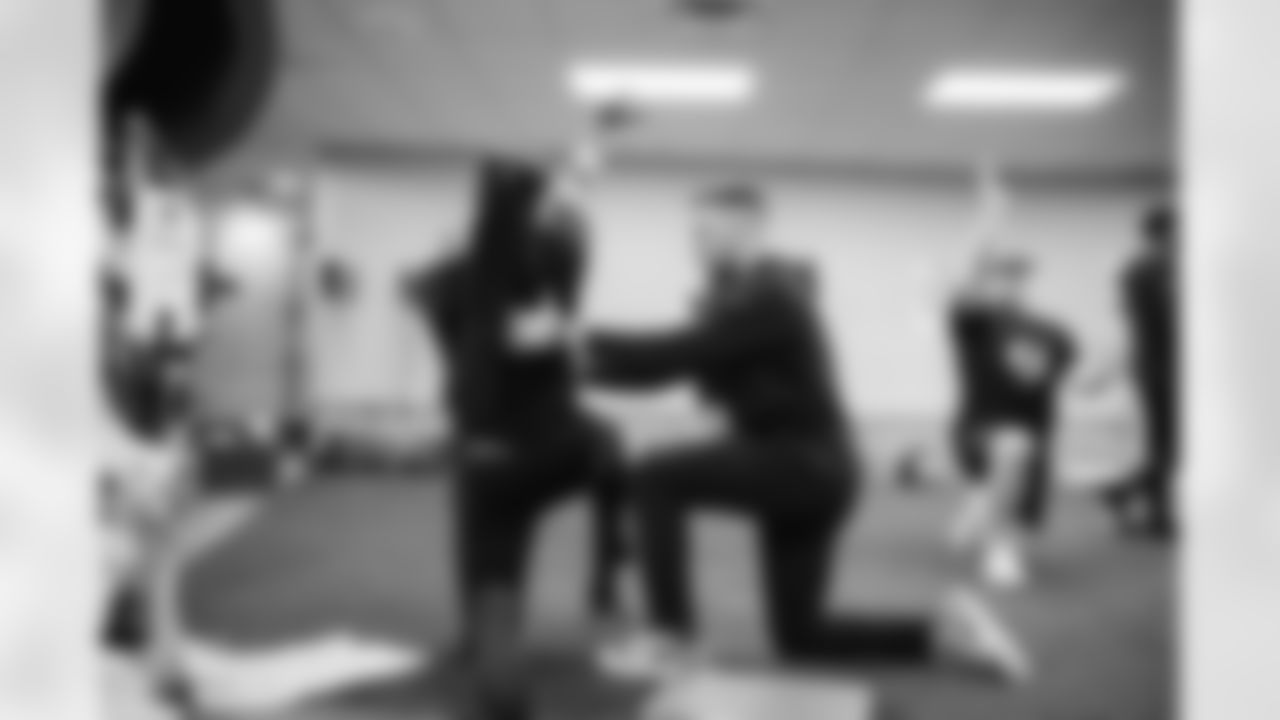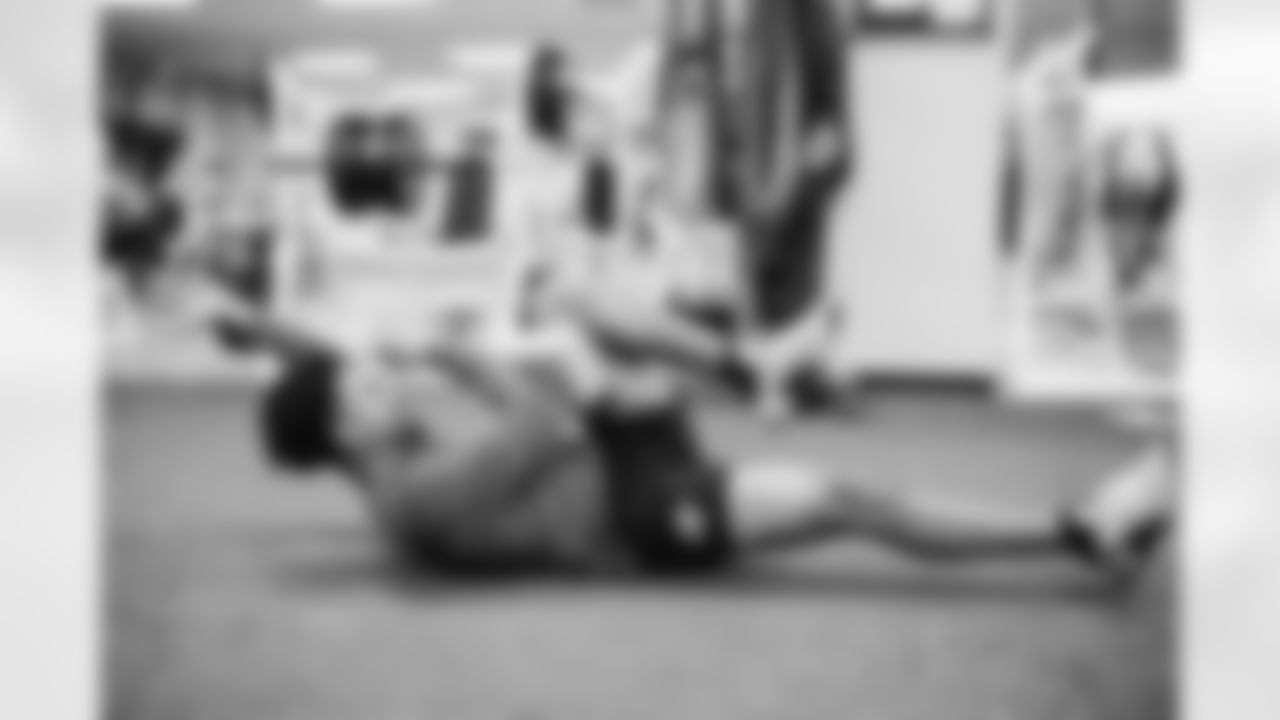CHARLOTTE — No one's really sure what it's going to look like yet, but they know it's going to be something to look at for a change.
For longtime special teamers like Sam Franklin Jr. and Nick Scott, it's a chance to make an impact in a different way. For a returner like Raheem Blackshear, it's a chance to make more plays than he had an opportunity to a year ago. And for coaches Tracy Smith, it's the challenge of the unknown.
With the league implementing rules changes borrowed from the XFL to make kickoff returns part of the game again this year, those tasked with executing it are still dealing with it as a bit of an abstract concept since none of them have ever done this before.
Franklin, the now-veteran safety who has built a reputation as a top special teams player, just shook his head when he watched the Super Bowl, and saw nothing but touchbacks, no returns. So for him, the radical upheaval of the rules brings some life back to his world.
"The way the rule is set up, it's supposed to be more safer, less contact," Franklin said. "But then it also gives the offense more time or more opportunities to score.
"I mean, it can really affect the game a lot more because it's more of a one-cut, and if somebody misses a tackle, it is going to be on."
Nobody relishes that more than Blackshear, who would have been among the league's leaders in returns last year, except he didn't get enough chances. He averaged 26.9 yards per return last year, but he only got 16 chances to do anything with the ball other than watch it fly through the end zone or kneel with it there.
The Panthers as a team returned 24 kicks last year, with 63 touchbacks. Nearly 80 percent of kickoffs league-wide went for touchbacks last year, with just 21.8 percent returned at all. In the XFL, 93 percent of kicks were returned. The NFL is predicting greater average drive starts, and more variability.
"It's going to be fun," Blackshear said. "I mean, I'm excited. I get more opportunities to be in the kick return game, so I get to show more value I can bring to the team.
"Knowing so many people were playing for touchbacks, man, it's sometimes difficult. But you've got to keep praying on it. I asked God like, hey, when my opportunity comes, just be with me."
It wasn't divine inspiration, but the league did decide to take a non-play and turn it into something this offseason. Owners approved a sweeping change to kickoffs, which is expected to increase returns, field position, and eyeballs on what was once a pro forma exercise to give teams the ball at the 25.
Under the new rules, which borrowed in spirit from an XFL experiment but has a few key differences, kickoffs will still begin at the far 35-yard line. But instead of giving coverage players 25-plus-yard sprinting starts to blow someone up (and create the potential for big injuries), the new rules have the 10 players on the coverage team starting on the other 40-yard-line. Nine of the 11 return team players will be in the setup zone between the 35 and 30, and those 19 players can't move until the ball hits the ground or is caught by a returner, as detailed in the video below.
In short, it shortens the space for high-speed collisions and increases the chances for returns.
"I'm trying to learn it as fast as I can without any actual live examples of this," said Smith, the new special teams coordinator who came from Seattle with 15 years of experience in the kicking game.
Blackshear was working out in March when the new rules passed, and his fiancee came out to share the news. His immediate reaction was excitement, followed by curiosity. He's friends with some spring-league returners who have experience with similar setups, and after talking to them, he's fired up.
"I'm like, that's pretty cool," he said with a laugh when recounting his reaction. "Like, I can't wait to try it. You make one person miss, you've got an opportunity to take it for something big."
Blackshear's caught eyes with big returns before (he had a 66-yarder in 2022 against the Bengals and a 52-yarder against the Texans last season), so he loves the possibilities.
Survey special teams players, and there's a general sense the return team might start to have some bigger bodies, perhaps even linemen in hopes of creating a single lane for a quick back like Blackshear to turn it into a de facto run play. But he admits he doesn't know.
"Maybe it's like an Oklahoma drill," Blackshear said with a grin. "Hopefully, you put some O-linemen out there, give me a crease, and come out of there.
"I'm going to play it out at first to see how it is. Then, when I get a chance to take it, I'm going to take it."
Again, players are still just guessing because coaches are still working out the details. Smith said he and his colleagues had a conference call last week to work through the finer points of the play, and he thinks there could be some minor tweaks in the future to some of the specifics of the rule.
Then, the process of trial and error will begin.
"It's kind of seeing what the new norms are so that we can try to beat the norms, you know what I mean?" Smith said of the impending evolution of the play.
For a coverage team regular like Franklin, he said the idea of putting bodies up the middle makes sense since return teams like the idea of running the returner in the general vicinity of the kicker (who is not traditionally a person who makes a lot of tackles).
"But I mean, if you have an athletic guy who can make a big guy miss, then it's going to be like, ok, are we going to really sacrifice footwork and agility over strength?" Franklin asked. "It could go a lot of ways."
New safety Nick Scott came here because of his familiarity with the defensive staff, but he's played a lot of special teams as well, and thinks the unknown is what makes it interesting.
"My immediate thought is, there's going to be a big learning curve around this league," he said. "I think there's going to be all different types of styles of returns, but for the most part, as a guy that's covered a lot of kicks, I do think there are some things that play to a kickoff team coverage, advantage, just with the short set that the return team has and everything like that really gives you an opportunity to trying to move, and we're going to get on people faster than being 10, 15, in some cases, 20 or more yards apart. So, there's pros and cons, we just have to see what sticks."
Scott said he could see more explosive plays as a result (that's certainly the intent), and as a veteran who has played a lot of special teams downs, he likes the job opportunities that come with it.

While acknowledging he wasn't sure yet how it would look in the fall (the Panthers won't really be able to practice it on the field for some time), Smith said he likes having a core of special teamers like Franklin and linebacker Tae Davis among others, giving him a stable place to build from.
But since there are differences between the old XFL rule and the new NFL one (the XFL didn't allow a second player deep on the return team), there's a limit on what he can actually glean from the 400 or so reps of tape he's watched time and again.
"It's theoretical," Smith said. "We're just drawing it and guessing. There's going to be a guess-and-check process as we go."
Smith agrees that the changes could mean more big bodies on the kickoff teams (usually the province of backup defensive backs and linebackers and running backs and tight ends), creating value in having some bigger athletes. But because the kickoff can still be in one corner of the landing zone or the other, he still wants to have guys who can run and cover.
But as he talks to his compatriots around the league, they all admit this year is a grand experiment and that none of them know for sure how it will turn out.
"That was the question I was asking to the other coordinators at the combine," Smith said. "Like, in five years, are we talking about this rule? Are we tweaking this rule? Are we going backwards? And that is a straight up projection? I hope we're going in the right direction. I hope we're now in the family of where we're going to end up. ...
"So, are you looking at the NFL kickoff rule in 2044? Do you know which way it's going to go? We'll see about that. I hope that we took a big step in the right direction towards the future of football."
View photos from the weight room and the practice field as the Panthers' players went through their second day of voluntary offseason workouts on April 11, 2024.































































